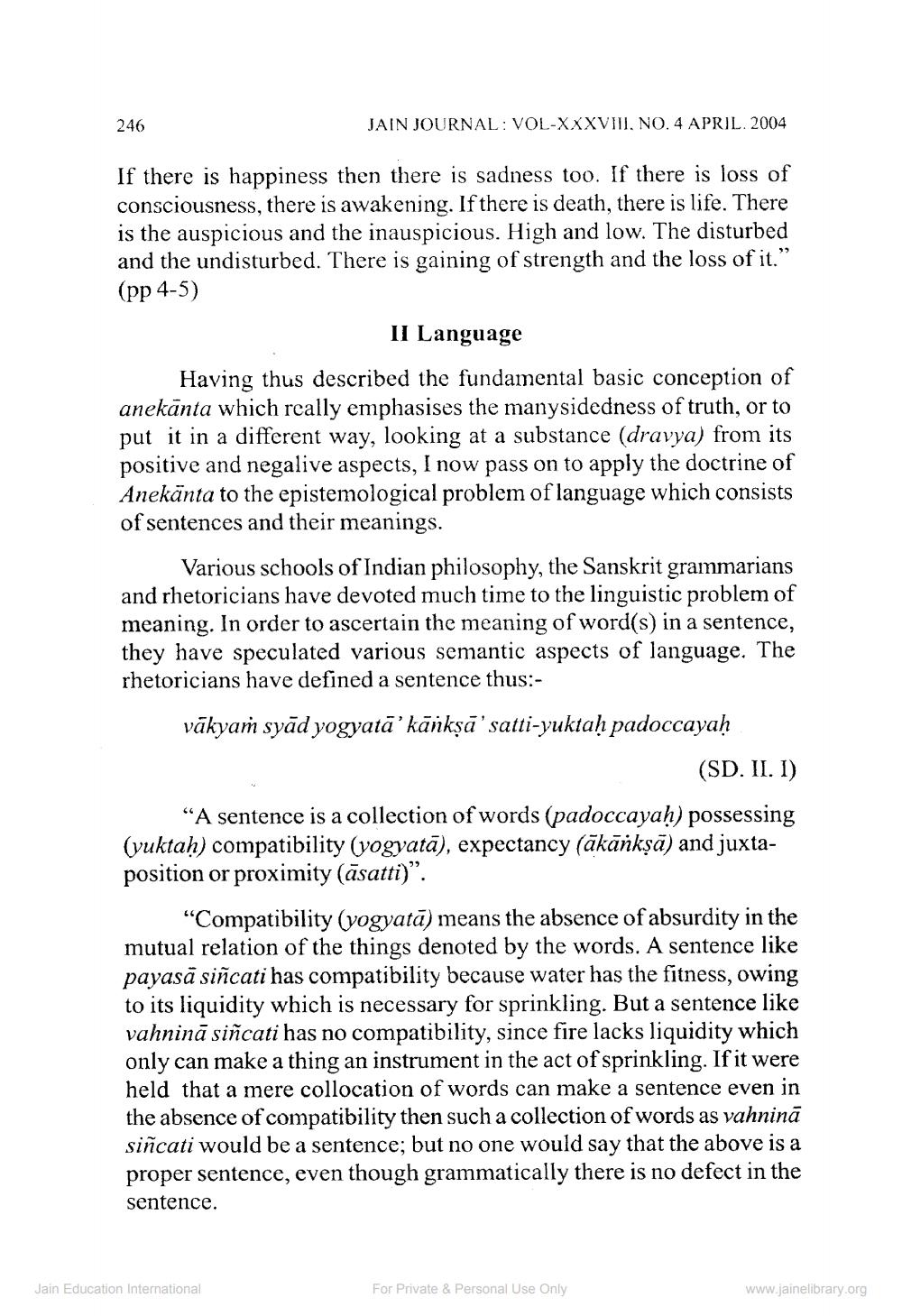________________
246
JAIN JOURNAL: VOL-XXXVIII. NO. 4 APRIL. 2004
If there is happiness then there is sadness too. If there is loss of consciousness, there is awakening. If there is death, there is life. There is the auspicious and the inauspicious. High and low. The disturbed and the undisturbed. There is gaining of strength and the loss of it." (pp 4-5)
II Language
Having thus described the fundamental basic conception of anekanta which really emphasises the manysidedness of truth, or to put it in a different way, looking at a substance (dravya) from its positive and negalive aspects, I now pass on to apply the doctrine of Anekanta to the epistemological problem of language which consists of sentences and their meanings.
Various schools of Indian philosophy, the Sanskrit grammarians and rhetoricians have devoted much time to the linguistic problem of meaning. In order to ascertain the meaning of word(s) in a sentence, they have speculated various semantic aspects of language. The rhetoricians have defined a sentence thus:
vākyam syad yogyatā kānkṣā' satti-yuktaḥ padoccayaḥ
(SD. II. I)
"A sentence is a collection of words (padoccayaḥ) possessing (yuktaḥ) compatibility (yogyata), expectancy (ākānkṣā) and juxtaposition or proximity (āsatti)".
"Compatibility (yogyata) means the absence of absurdity in the mutual relation of the things denoted by the words. A sentence like payasa siñcati has compatibility because water has the fitness, owing to its liquidity which is necessary for sprinkling. But a sentence like vahninā siñcati has no compatibility, since fire lacks liquidity which only can make a thing an instrument in the act of sprinkling. If it were held that a mere collocation of words can make a sentence even in the absence of compatibility then such a collection of words as vahninā sincati would be a sentence; but no one would say that the above is a proper sentence, even though grammatically there is no defect in the
sentence.
Jain Education International
For Private & Personal Use Only
www.jainelibrary.org




